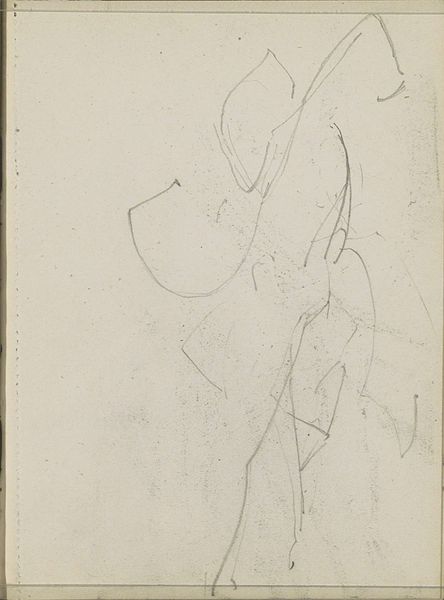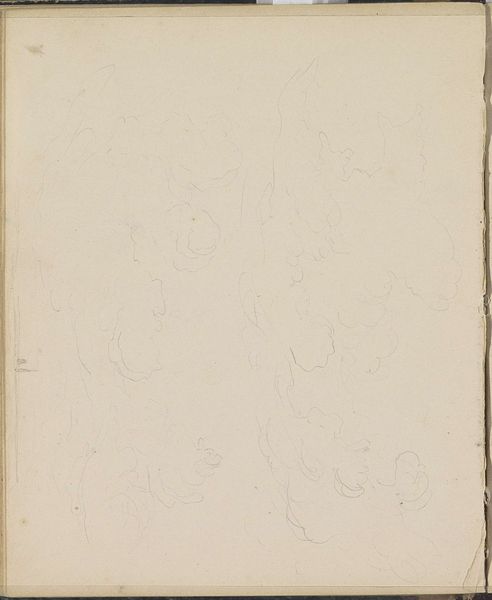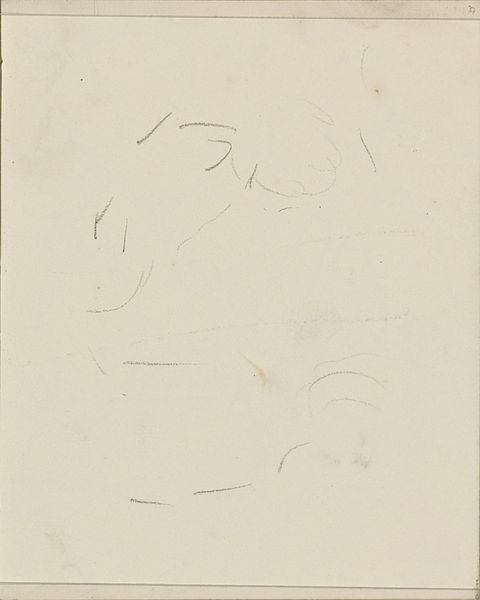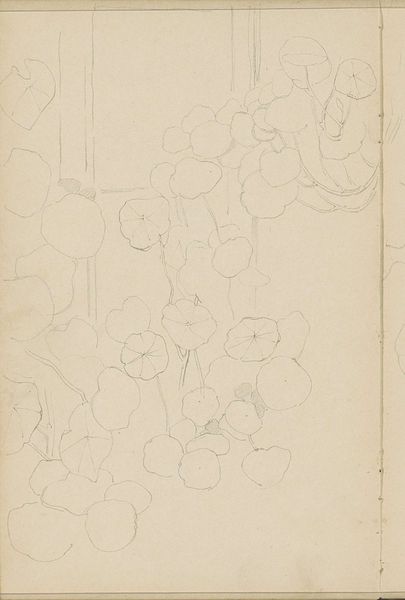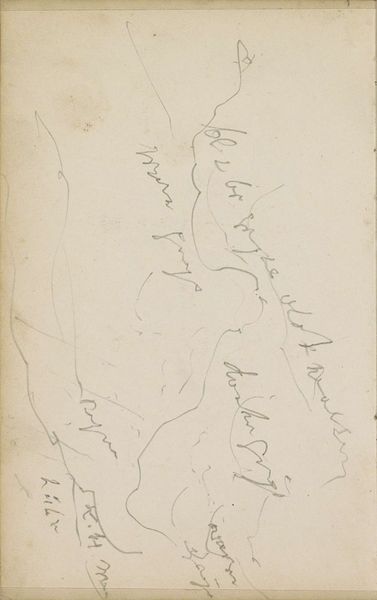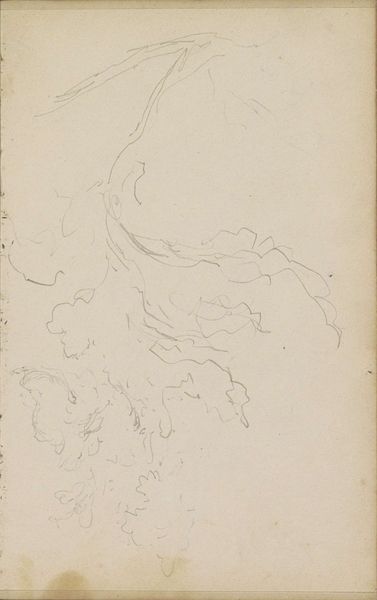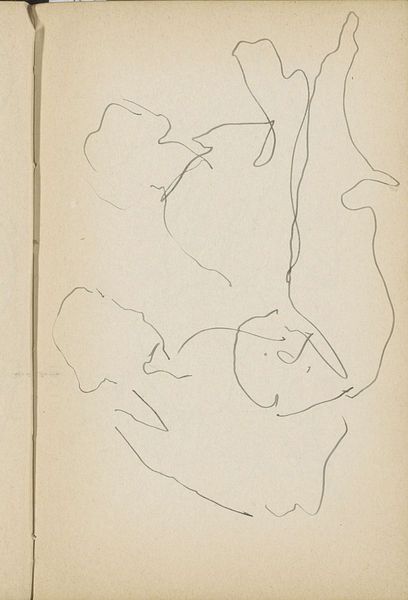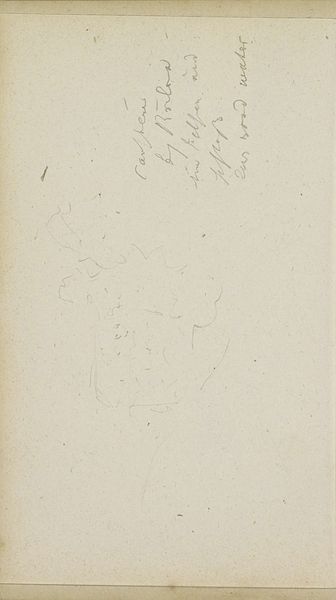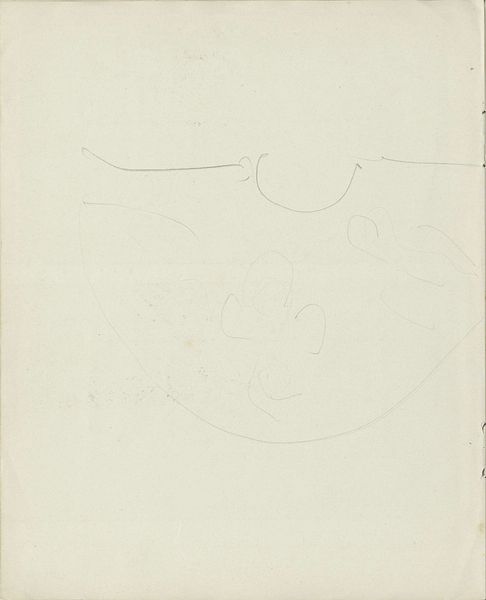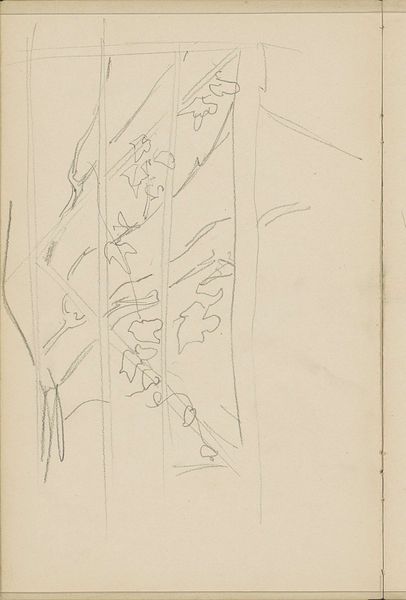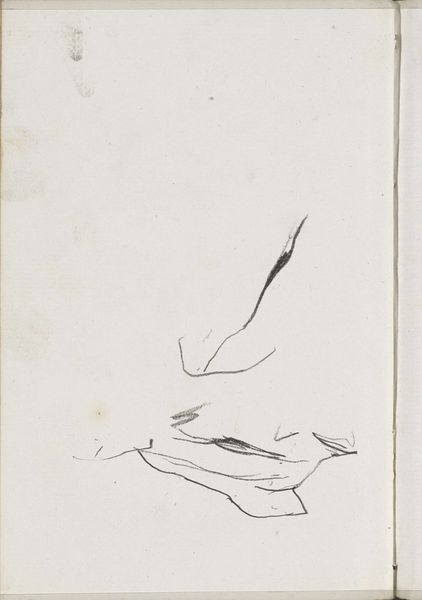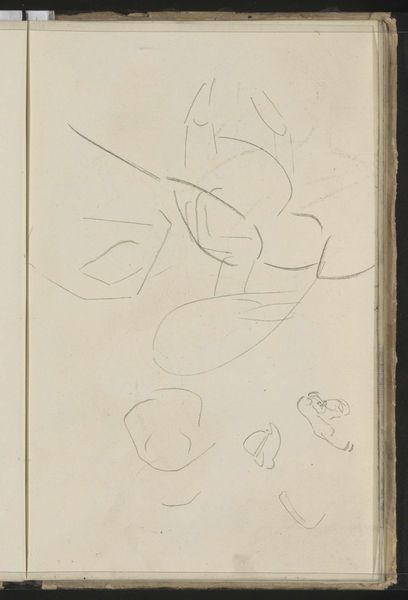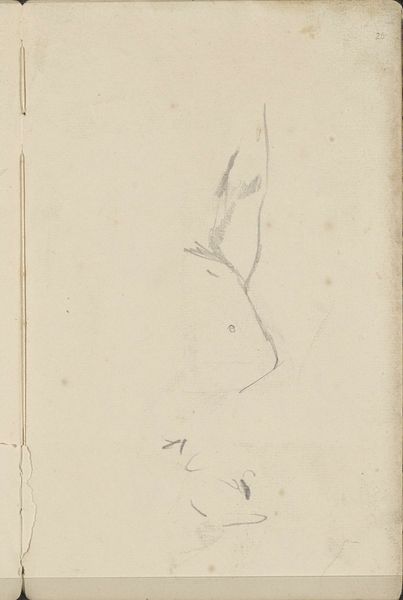
Copyright: Rijks Museum: Open Domain
Curator: This piece, "Stengel met bloemknoppen" by Antoon Derkinderen, created sometime between 1889 and 1894, offers a delicate study in pencil on paper. Editor: My first impression is of a certain fragility. The lines are so light, almost tentative, conveying a sense of ephemerality. It feels like a whisper of nature rather than a bold statement. Curator: Precisely. Looking through a contemporary lens, it's interesting to consider how the drawing intersects with the prevalent artistic debates around naturalism and abstraction. Derkinderen uses the plant form – the stems and buds – as a starting point, yet the abstraction pulls us towards questioning the representational aspects of his identity as an artist and his political context. How does he, through the soft impressions of botanical matter, address the issues facing the art world at the turn of the century? Editor: That's a compelling perspective. In the context of late 19th-century artistic production, the choice of subject and the execution reflect, perhaps, an anxiety regarding art's role in a rapidly industrializing world. There's a deliberate sketchiness, resisting photographic realism, almost turning away from grandiose salon painting. Curator: I agree. It makes us question the grand narratives surrounding identity. Derkinderen creates a study that avoids explicit politics and narrative drama, offering a quiet observation of nature's subtle process of budding. His personal journey through the work is perhaps mirroring societal transition and tensions, particularly as society navigated modern art styles. Editor: It is fascinating to interpret. The light touch mirrors not only the flower, but Derkinderen’s social touch. It shows awareness. Curator: It invites us to think about the political choices of even the seemingly apolitical artist. Editor: Well said. It reminds me that seemingly simple works often have great nuance and many stories to tell when you consider where it sits within social, cultural, and political dynamics. Curator: Absolutely, understanding that these fragile drawings hold more strength through political understanding, and societal awareness than initially conceived.
Comments
No comments
Be the first to comment and join the conversation on the ultimate creative platform.
